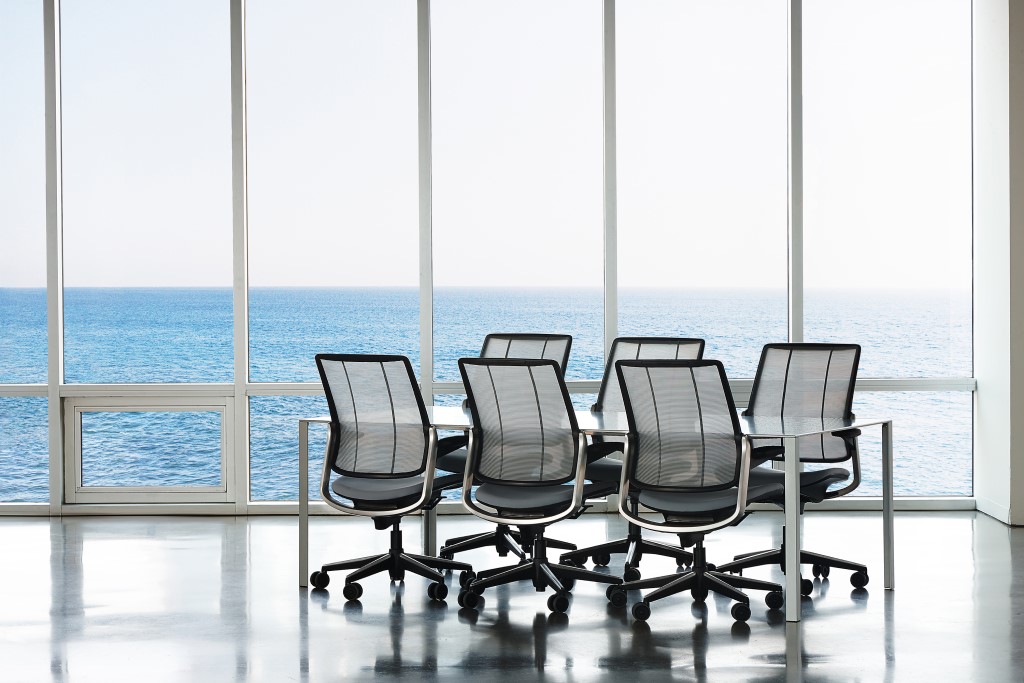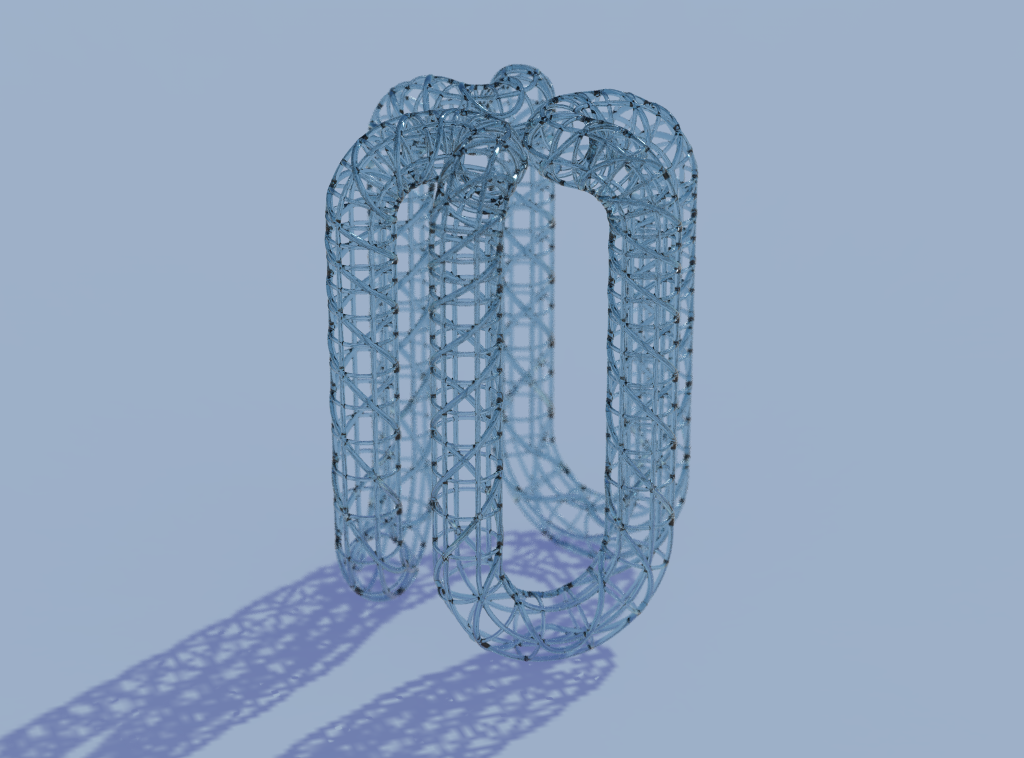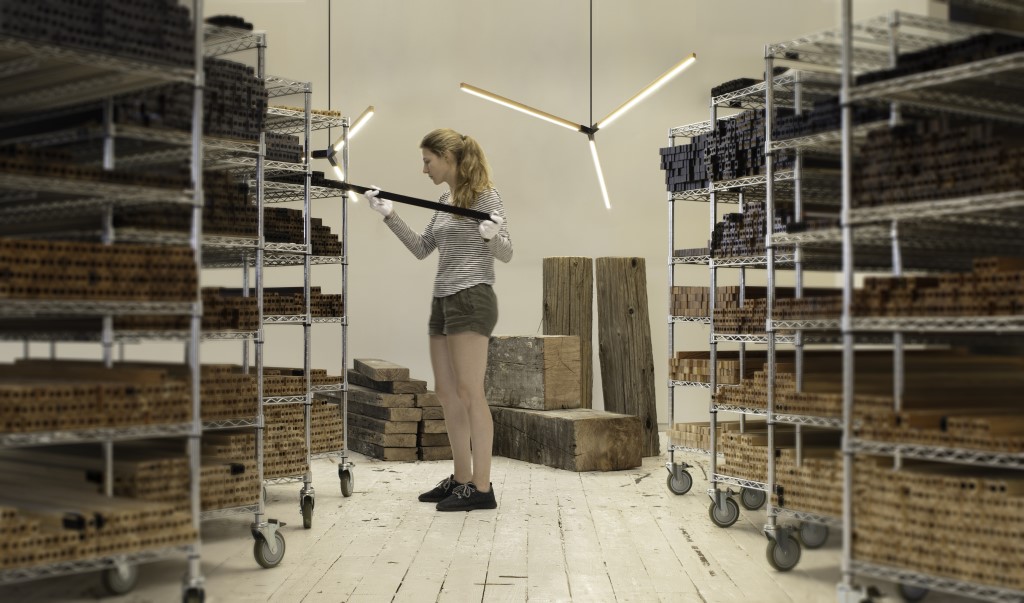RECKONstruct explores new approaches to sustainable design
(February 27, 2019) The American pavilion, titled RECKONstruct, at the XXII International Exhibition of La Triennale di Milano will be unveiled alongside showcases from around the world on March 1, 2019. The theme of this year’s International Exhibition is Broken Nature: Design Takes on Human Survival, illuminating the connection between humanity and the natural environment through design. The American pavilion, conceived and developed by a group of passionate environmental advocates including Arup, Humanscale, MIT’s SHINE Program, Novità Communications and NextWave Plastics, demonstrates how sustainable design can respond to the current global environmental crisis. Open through September 1, 2019, RECKONstruct spotlights the materials revolution underway in the United States and documents how the design studio of New York-based furniture company Humanscale reimagined a simple stool through three different approaches to sustainability—using naturally grown materials (bio-fabrication), harvesting unused waste (circular economy) and mimicking nature’s engineering solutions (biomimicry).
To measure the sustainability of each of the three designs, Humanscale partnered with the Massachusetts Institute of Technology’s SHINE program—Sustainability and Health Initiative for NetPositive Enterprise. Evaluating all three stool designs using a comprehensive Life Cycle Assessment (LCA) confirmed and quantified land, climate, water, and energy impacts, among others, from materials sourcing to transportation to manufacturing to actual use. Ultimately, each stool is measured for its environmental “footprint” and “handprint,” or how it can help fix the broken nature that surrounds us.

Smart Ocean is the first-ever task chair made with ocean plastic, almost 2 lbs. of recycled fishing net material. Designed by Humanscale, the Smart Ocean chair is an inventive adaption of the legendary Diffrient Smart chair. It’s also the first tangible product to emerge from the partnership between Humanscale and Bureo, a startup developing innovative solutions to prevent ocean plastic pollution. Both organizations are co-founders of NextWave, a small task force committed to redirecting materials away from the ocean and into their supply chains. © Humanscale
“As a pioneer in sustainable design and manufacturing, Humanscale is honored to represent the United States in the important global movement reshaping mass production,” says Jane Abernethy, Chief Sustainability Officer, Humanscale, and RECKONstruct Curator. “Sustainability is the ultimate design challenge and our concept work on display at the Triennale’s Broken Nature presents the range and beauty of sustainable solutions inspired by nature.”

Biomimicry – Inspired by the Venus Flower Basket sea sponge, this rendering of the stool designed by Humanscale’s Jacob Turetsky minimizes material use through additive manufacturing.
© Humanscale
Using materials including bio-fabricated mycelium from Ecovative Design, plastic from fishing nets harvested from the ocean by Bureo, a member of NextWave Plastic’s consortium of materials suppliers committed to mitigating environmental contamination, and non-recyclable municipal waste, the stools have the capacity to absorb carbon dioxide, reduce ocean plastic pollution and avert methane emissions from landfills.
New York-based lighting manufacturer Stickbulb provided the pavilion’s lighting installations. Stickbulb turns wood from locally-demolished buildings, decommissioned water towers, and fallen trees into a system of modular LED beams. The Bough pendants on display are made from 300+ year-old redwood salvaged from a dismantled water tower at 32 Court street in Brooklyn, New York.

Stickbulb, based in Long Island City, NY, stockpiles reclaimed timber from various sources, including New York’s iconic water tanks, to construct its LED light fixtures. © Stickbulb
An immersive film, produced by a Los Angeles-based team of engineers and designers at global engineering firm Arup, contrasts the innovative design concepts with conventional manufacturing approaches. The concept of the immersive film emerged from a consideration of the disconnect of design exhibitions from the outside material world. The curatorial team wanted to invite Triennale visitors to experience the reality of the material sources and supply chains that make possible the design objects on view throughout the exhibition, choosing an innovative 360-degree filming and audio recording technology to develop original filmed sequences to tell the full materials lifecycle story. In the exhibition, viewers are immersed into situations as diverse as a California coastal forest, an active rock quarry operation in Kansas, Humanscale’s New Jersey manufacturing facility and a construction recycling yard in Southern California.

A film still captured from the exhibition, RECKONstruct, an immersive film for the USA Pavilion at the 2019 Milan Triennale. © Arup
“We’ve become so far removed from the sources of materials we use in our daily lives, including where they come from and where they end up,” said Russell Fortmeyer, Arup Associate Principal and Sustainability Consulting Leader and Chief Curator of the exhibit. “RECKONstruct gives us elegant and tangible examples of how design that is conscientious of the life-cycle burdens of materials can bring forth better products to the spaces in which we spend our lives.”
“The central challenge at this moment in nature’s history on Earth is for one of its creations, humanity, to consciously adopt one of its core creative principles: reciprocity, taking but also giving back,” adds Gregory Norris, Director of SHINE@MIT. “Our footprints are the taking that we seek to minimize through efficient design. Our handprints are the giving back, that we seek to maximize, through enlightened design.”
RECKONstruct invites visitors to immerse themselves in a new circular economy, experiencing its activities in spatial, audial and temporal terms, which expose the hidden opportunities of the material life cycle as a call to both collective and individual action.
Following are statements from RECKONstruct’s partners:
Novità Communications
“This is an important time to show the commitment of the US design community to the global environmental crisis we all face. Our team jumped at the chance to join this critical conversation spearheaded by Paola Antonelli and the Triennale. The US Pavilion exhibition presents a small window into the work that is happening at companies large and small across the US. We are inspired by our global colleagues and feel opportunities like this bring us all forward.” – Christine Abbate, President, Novità Communications
NextWave Plastics
“As a species, humans have made a significant impact on the earth. This exhibit reminds us that it is possible and necessary to design not only with nature in mind, but also to hold nature as a central design principle in all that we create.” – Dune Ives, Executive Director, Lonely Whale
Stickbulb
“We’re ecstatic to be included in the RECKONstruct exhibit, which closely aligns with our mission. Since we started Stickbulb in 2012, our mission has been to help design a world filled with more light and less waste.” – Stickbulb Co-Founder Russell Greenberg
Additional supporting sponsors include Green Building Alliance and NeoCon. All partners and sponsors are listed below. For more information about RECKONstruct, find additional press materials at bit.ly/reckonstructpress.
Commissioner
Gregory Norris
SHINE@MIT
Chief Curator
Russell Fortmeyer
Arup
Curators
Jane Abernethy, Mesve Vardar
Humanscale
Frances Yang
Arup
Exhibition Design
Paul Chavez, Matthew Wilkinson, Ashley Hastings
Arup
Project Activation
Chris Abbate, Danielle McWilliams, Barbara Musso
Novità
Tina Brennan, Ross Bergman
Humanscale
Primary Sponsors
Humanscale
Arup
Novità
Supporting Sponsors
Stickbulb
NextWave Plastics
NeoCon
Green Building Alliance
Supporting Technical Organizations
International Living Future Institute
Lonely Whale
Biomimicry Institute
Chrysalis Strategies
Modern Meadow
Cradle-to-Cradle Product Innovation Institute
Ecovative
UBQ Materials
American Institute of Architects
U.S. Green Building Council
American Society of Interior Designers (ASID)
Pacific VR




